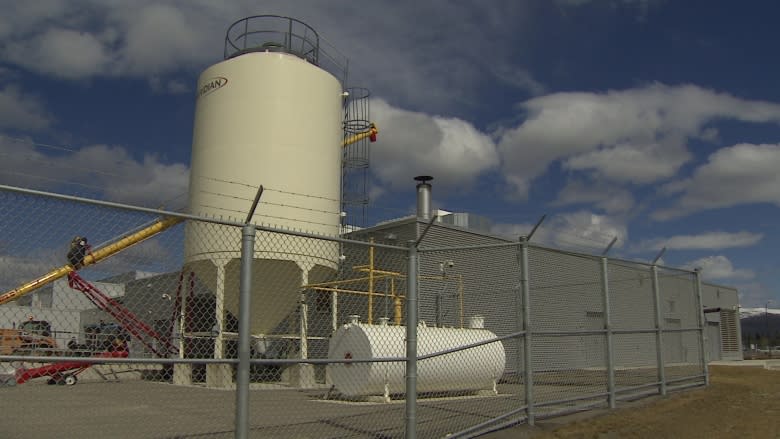How First Nations got ahead of the curve on clean energy
Haida Gwaii's John Disney couldn't help but notice how much wood waste was left behind by local loggers.
"We've got waste coming out of our ears up here," said Disney, the economic developer of Old Massett Village. "They do a lot of logging, and none of waste goes anywhere because it's too expensive to ship!"
Generally, the bulk of wood waste is either burned or left to decompose in the bush. But Disney and his partners recently came up with a plan to make use of it — by feeding it into a gigantic boiler that will heat all of the town's community buildings, and drastically reduce their greenhouse gas emissions in the process.
Renewable energy projects like Disney's are on the rise in Indigenous communities across the country. And when it comes to moving away from fossil fuels, some industry experts say First Nations are ahead of the curve.
Bringing together community
Community buildings in the Old Massett Village currently run off a patchwork quilt of antiquated heating systems fuelled by diesel generators, emitting upwards of 300 tonnes of carbon dioxide into the atmosphere each year.
Disney began exploring options to update the town's heating system, while reducing their reliance on diesel that's delivered to the island by tankers.
"When you live in a place like Haida Gwaii, you're very aware of climate change issues because the sea levels are coming up on us," said Disney. "The environment is front and center."
Disney came across a boiler that generates electricity via wood waste left from logging. The piece is now being installed, and when the project is complete, it will reduce carbon emissions to 10 tonnes annually — with enough power leftover to heat a new community swimming pool that's in development.
A new network
Disney says similar projects could be adopted by different First Nations across the province to make them more self-sufficient, while also creating jobs and enhancing the economy. In fact, clean energy projects are on the rise in Indigenous communities across the country.
"There's about 165 Indigenous communities that own part, or all-of, clean energy projects," said Chris Henderson, president of Lumos Energy.
"In the last five years, Indigenous communities have been partners in projects [totalling] $30 billion of investment in clean energy ... and almost half of them are in B.C."
When it comes to implementing community clean energy projects, Henderson says First Nations are Canada's leaders.
"There are way more Indigenous communities that are equity owners in a clean energy project in Canada than there are municipalities doing the same."
Henderson recently helped launch the Indigenous Clean Energy Network (ICEN), a collaborative network of First Nations dedicated to growing clean energy projects on their territories. He says it's a way for communities to learn from one another, and encourage new developments by connecting them with financiers, energy companies and governments.
"[The shift away from diesel is] not just about self-sufficiency — it's actually making clean energy an economic development source for the community."
Economic potential
Some communities are already at the forefront of the economic potential that clean energy provides.
T'Sou-ke First Nation on the southern tip of Vancouver Island currently runs off solar powered micro-grids that have drastically reduced their reliance on diesel energy. The benefits extended well-beyond the much-enjoyed cheaper energy bills.
"You have to bring down that footprint — but at the same time you're building capacity, you're creating jobs, you're creating education and outreach," said Chief Gordon Planes, who is also an ICEN advisor.
Now, the First Nation is working with other communities to share their progress.
"We're putting in a micro grid system in a native village up on the island and it displaces over 40 per cent of the diesel."
"If you can eliminate 40 to 50 per cent of the diesel that has to be trucked up into those communities, that's a huge improvement — I think that's where we need to get because the technology is here."



